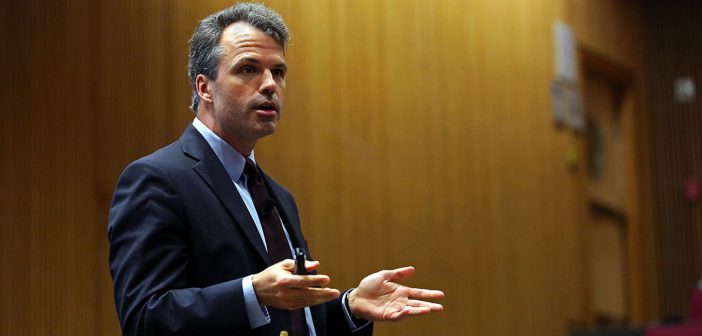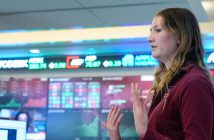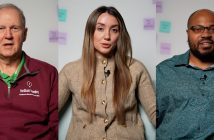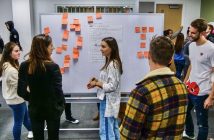A country’s economic success correlates directly with the size of its welcome mat, a leading business professor told a Fordham audience on Sept. 17.
“Global migration of talented individuals is one of the most important phenomena we have in business and in economic development,” said author William Kerr, Ph.D., in a talk at the Lincoln Center campus.
“This is the way that our modern economy, the knowledge economy is being driven.”
Kerr, the D’Arbeloff Professor of Business Administration at Harvard Business School, shared the findings of his book The Gift of Global Talent: How Migration Shapes Business, Economy & Society (Stanford University Press, 2018) at an event sponsored by the Gabelli School of Business.
He presented a picture of a system that has succeeded wildly in funneling talented people from other countries into Silicon Valley and, to a lesser extent, the medical field, but needs improving. He cautioned at the outset that although President Donald Trump has dwelled a great deal on the issue of immigration, he doesn’t appear in the book until the 10th chapter.
“A lot of the things I want to highlight here as areas of concern have been in play for two decades, three decades, or longer,” he said.
The statistics supporting immigration to the United States are undeniable. In 1975, one in every 12 patents filed in the U.S. came from an immigrant; today that number is one in every 3.5 patents, he said.
“It’s a remarkable change in the ethnic composition of the U.S. innovative workforce. It’s something that we see in other forms, like entrepreneurship and CEO leadership. This has been an enormous story for U.S. business history over the last few decades.”
In fact, he said, according to data he’d collected, from 2000 to 2010, 58% of all of the world’s migrating inventors who migrated chose the United States as their destination. In the San Francisco area, the change has been especially profound. In 1975, one in every 220 patents filed in the United States was by someone of Chinese or Indian descent living in that city; today those same groups living there account for one in every 12 patents filed in the country.
For perspective, Kerr compiled the U.S. states with the least number of patents and compared the two.
“You have to add up 28 states before you get to one out of 12 patents. Think about that for a second. You now have two ethnic groups in this one super cluster (San Francisco) that are producing more innovation than more than half of the states in America combined,” he said.
There are some real downsides to this “super cluster” phenomenon though. In the 1970s and 1980s, he said, company towns like Rochester, New York, and suburban office parks were also home to innovation; their demise has coincided with sky-rocketing housing prices in places like San Francisco, Seattle, and New York.
“The consequence of global migration is that we’ve stopped and reversed, and are concentrating innovation into what are ever more hyper-talented super clusters,” he said.
The H-1B Visa, which is the primary way in which workers find their way to the United States and which received 300,000 applications for 85,000 spots last year, is due for an overhaul, he said. Even though there is a good rationale for only granting it to immigrants who have a job offer, it has ceded too much power to corporations that have abused it, he noted, such as when the Disney company used it in 2014 to replace 250 IT workers.
“We should just recognize that we have said the U.S. immigration policy for skilled immigration should be Microsoft’s or General Electric’s policy towards skilled immigration. You have to recognize that firms are going to use it in ways that you never intended,” he said.
To improve the system, Kerr recommended changing the way visas are allocated.
“Any time you have a scarce resource that is not priced, you’ve got to ask, is a lottery the best right way of doing it? Should we be favoring someone that is doing code testing at the same level that someone is doing AI research?”
He said that better pathways for students needs to be established, as U.S. universities are increasingly becoming reliant on foreign students who graduate without a clear path to a job here. The technology sector also has to do a better job showing why immigration benefits the country at large, and not just itself.
“I say to the tech industry that you give us a statistic like, 50 percent of American Ph.D.s are foreign born, if you’re living in Boston, that’s music to your ears. If you’re living in some parts of middle America, that’s actually part of the problem,” he said, he said, since there are many fewer immigrants in that part of the country.
“The overall ledger remains uneven, but as a whole, the stories [in my book] highlight that we can make more by matching the best talent and the best people with the best opportunities and then finding ways to share in those experiences.”



